|
Home
Historical Research POW
Evasion
Reports
Français
Ossian Arthur Seipel's Memoirs
|
Previous
Chapter 7
Liberation
The trucks filled up as quickly as the
kriegies, or former kriegies, could get on
them. There was no order, just first come
first on board. I was separated from the
rest of our combine at that time and didn’t
ever see them again. I was taken to
Inglostadt, to an air field a short ride
from Moosburg. Some of the trucks went to
other air fields in the area and we all
began the wait for C-47s that were supposed
to take us to a redeployment center. While
waiting we wandered over to the hangars and
saw a number of German planes in various
stages of repair. What really got our
attention was a twin engine jet fighter. It
was probably the one that shot down the
B-24s a while back. |
|
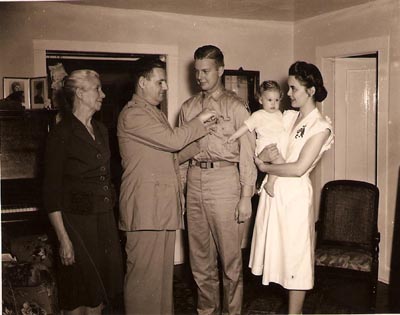
2nd Lt Ossian
Arthur Seipel receives medal in 1945. From
left to right: his mother, an unidentified
officer, 2nd Lt Seipel, his daughter and his
wife. - Photo Lynn Dobyanski |
Not far from the air field was an old German
fort that had recently been evacuated. It contained
all kinds of military stuff, which was going fast as
more and more kriegies showed up. I got a few
things, like some German insignia, a couple of
knives, a sleeping bag and a back pack. Back at the
field we slept in sleeping bags from the fort and
had a pretty good nights sleep. Next morning a
German Stuka dive bomber made a pass at the field
and then came in for a landing. There were three
young German flyers on board, saying they wanted to
surrender to the Americans instead of the Russians.
So we took them prisoner and turned them over to the
MPs.
On May 8th, 1945 we heard the news that Germany
had surrendered and the war in Europe was over. It
was also my sister Betsy’s and brother in law
Skinny’s birthday. This was also the day that the
C-47s came to pick us up. Next stop was a
redeployment depot somewhere just outside of Reims. The first thing they gave us was a new
duffel bag. I put my looted guns and stuff in it
and waited. Here we waited in line for most of the
day to strip down to nothing, toss our old clothes
into the trash, and shower, one minute to soap up,
two minutes to rinse off. Then wrapped in towels we
followed the arrows to the medical and dental
examinations. Here we also got a typhus shot.
After the medics were through with us we were
ushered into the quartermasters section, where we
received shirts, ties, pants, socks, jackets and a
dopp kit containing a razor, shaving cream,
toothbrush, comb, and a handkerchief. The clothes
were approximately the right size. The shoes took a
little longer, but if you knew your size they tried
to find it, otherwise you got the nearest size to
it.
After getting dressed we were sent up to the
mess hall where we were furnished a chicken dinner
complete with mashed potatoes and gravy, green peas
and topped off with ice cream. We were told that we
could eat as much and as often as necessary to get
the weight back on.
Dragging our duffel bags we got on trucks to go
to a railroad siding where we were assigned to a
hospital train and each given a stretcher to sleep
on. There were stretchers mounted four high on each
side of the car, so we could sleep on our trip to
Camp Lucky Strike* for more processing.
At Camp Lucky Strike we were encouraged to eat
and rest, but you had to stand in line for
everything, meals, showers, clothes and anything
else you might have to do. We were encouraged to
drink a lot of eggnogs and they were delicious, but
you had to stand in line for them too. We lived in
big square tents with wooden floors and a screened
door for an entrance. This is where we could stash
our souvenirs and extra clothes while we were busy
standing in line. German POWs were used to police
the area and keep the tents clean. I think one of
them stole some of my stuff. My Luger and two
Hitler Youth knives and a bottle of French perfume
were missing.
We stayed at Camp Lucky Strike for about three
weeks then were sent to another deployment camp to
wait for transportation home. We lined up for mess,
donuts, coffee, showers and to get on board the
liberty ship General George Squire. Yep, we were
heading home.
After a slow trip across the Atlantic, past the
Statue of Liberty and a greeting from a fleet of
fireboats spraying water and bands playing, we
landed and went to Camp Dix, to board trains for, in
my cast Fort Sheridan, Illinois. After processing
and getting my back pay, my folks picked me up at
Fort Sheridan and I spent the night with them. The
next day I boarded the Illinois Central Railroad for
a trip to Memphis, Tennessee. I was supposed to
catch a train there to Little Rock, Arkansas where
Lois and her folks now lived.
It was a long slow trip and I tried to think of
just the right things to say when I got there. I
think it was early afternoon when I arrived in
Memphis and I carried my B-4 bag off the train
wondering where I should go to get the train to
Little Rock. Then I saw her a little way down the
platform. She was prettier than I had remembered.
I really don’t remember much about that meeting
except that we were together.
Somehow we found our way to the Little Rock
train and sat as close together as possible till we
reached Little Rock. When we got there, her folks
were there to greet us, and someone handed me a
little girl. She was the prettiest baby ever,
nothing compared to the mean little kid in the six
weeks old picture I had carried around for the past
six months. Even Lois’ dad greeted me like he meant
it. Probably because the papers all referred to us
as the war heroes. Even though I didn’t deserve the
title it worked for him.
Lynn took a lot of getting used to. It was
different. I didn’t know whether to be afraid of
her or what. I tried to cradle her in my arms, but
she reared back and let me know that she was almost
eleven months old and had a mind of her own. I
figured I’d watch Lois for a few days to see how to
handle things, which wasn’t the hardest thing to do
anyway.
I was home now and another chapter in my life
was about to begin."
*Camp Lucky Strike was located near Saint-Valéry-en-Caux
in Seine-Maritime (Normandy). Here is all what
remains of Lucky Strike: a building and a small
airstrip for leisure aircrafts. The camp who once
hosted 100,000 soldiers was leveled after WWII and
returned to cultivation.
|
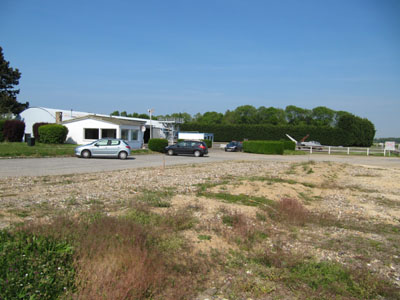
©
Seconde-Guerre-Mondiale.com |
|
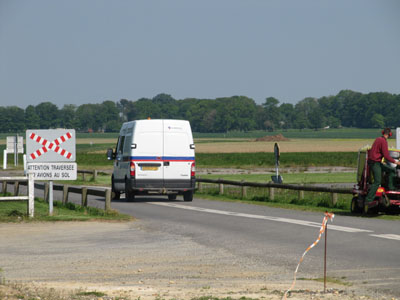
©
Seconde-Guerre-Mondiale.com |
Eighty nine American
soldiers were killed on January 17, 1945 when a
train failed to stop and drove through nearby Saint-Valéry
terminal railway station. A plaque on the new
railway station commemorate the sacrifice of these
men who came all the way from the United States to
fight for the freedom of Europe.
|
: ©Seconde-Guerre-Mondiale.com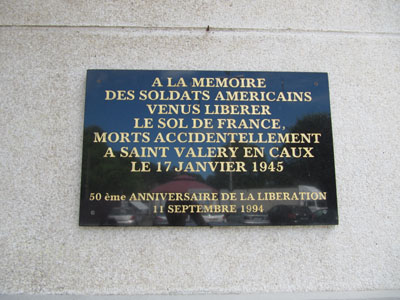
"In Memory of the American soldiers who came
to liberate the soil of France and died accidentally in
Saint Valéry en Caux on January 17, 1945.
50th anniversary of the liberation September
11, 1994" |
|
: ©Seconde-Guerre-Mondiale.com
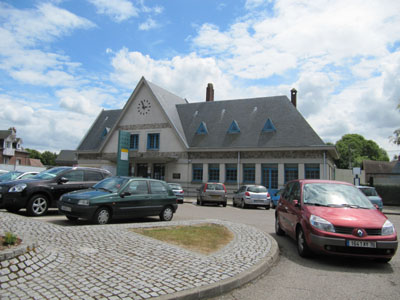
Saint-Valéry railway station in 2011 |
Chapter 1:
Barksdale Field
Chapter 2:
England
Chapter 3:
Captivity
Chapter 4:
Sagan
Chapter 5:
The March
Chapter 6:
Moosburg
Chapter 7:
Liberation
Accueil
Rapports d'évasion
Articles
Recherche historique
Contact
Liens externes
Conditions
générales
Politique
de confidentialité
Home
Historical Research POW
Evasion
Reports
Contact
External Links
Terms and Conditions
Privacy Policy |
